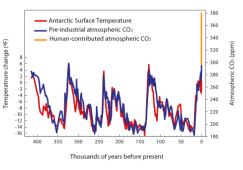
A detailed explanation is available on this simple website or watch this 30 minute explanation on YouTube.
A series of opinion pieces on, mostly climate change and related subjects to do with New Zealand.
 To understand modern climate change a knowledge of the natural cycle of ice ages and warm periods is a great help. Once the simple mechanics of how the system works is appreciated it is easier to see where we are going wrong and the likely consequences of our actions. A detailed explanation is available on this simple website or watch this 30 minute explanation on YouTube.
9 Comments
In a 2C to 3C warmer world, more like the Pliocene epoch, what can we expect to happen to our trees?1/10/2014  For the last million years the Earth’s temperature has had a cyclical pattern of ice ages and warm periods (we are now in a warm time) and the cooler periods would have been 8C cooler. CO2 is a greenhouse gas that drives temperature change and during these cycles CO2 cycled through a range of 280 parts per million in a warm period down to 180 parts per million in an ice age. In the depths of an ice age the world would have had thick glaciers down to Scotland or New York and the sea level would have been 120 meters lower than today. Our atmosphere now holds CO2 at a level of 400 parts per million and to get an idea of what the climate would be like we need to go back 2.5 million years or further to the Pliocene epoch as that was the last time we had CO2 at this level. If you think that this scenario is improbable, travel to a place where the temperature is about 3C different from where you live, which would normally be about 1000 Klm (650miles) North or South, and look at the trees. They will be mostly different and they are suited to their region. 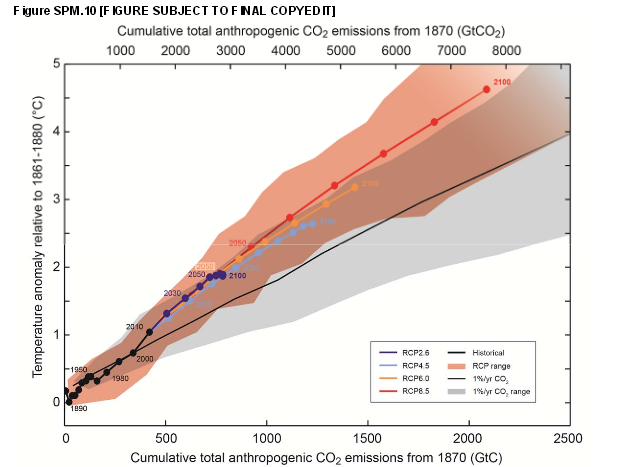 The huge pulse of CO2 we have put into the atmosphere is, in geological terms, so short that it is like being hit by a meteor. From 280 ppm to 400 ppm in one hundred years is unlike any natural event at all and we are headed for 450 ppm in the near future. The Earths atmospheric temperature has not caught up with the changes as 90% of the heat has gone into the oceans and although the ice is melting it takes time to melt a block of ice. Nevertheless the surface temperature has increased by 0.8C and is going up steadily so that we can expect to see some dramatic changes in our lifetime as the inertia in the system gathers speed.  The IPCC projections shown in the graph for CO2 emissions continuing at the current rate of ‘business as usual’ indicate a CO2 level of around 700 to 1000 ppm of CO2 at the end of the century with a temperature 2C higher and climbing steadily so using the Pliocene epoch as a model for our future climate is a realistic assumption. The big action with climate change is in the oceans, but here we are looking at the land and plant life and using trees as an example, we can anticipate how they will fare in the new climate. The trees of the Pliocene period were similar, but different, to the trees of today and were adapted to the climate that went with it. Those trees had taken hundreds of thousands of years to evolve to match those conditions. The trees we have today are adapted to a CO2 level of 280 PPM and a climate 0.8C cooler than todays and are rapidly going into conditions 2C warmer and with dramatically changed rainfall conditions of either drought or flood. 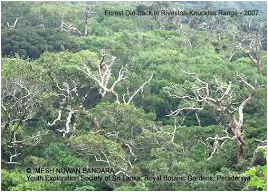 We know that trees like CO2 and will grow faster if they get more of it, but what is not so well known is that there are other elements that a tree needs to make use of this extra stimulus. One of these is nutrients and trees often grow in quite poor soil and if they grow too fast they will run out of food and will then starve. The second and most important element is water. With the extra CO2 come higher temperatures and a change in climate. The warmer climate causes the soil to dry more quickly and a change in weather pattern can lead to extended periods without rain and this will stress the tree and weaken it. At the same time, the change in climate can also lead to an increase in new diseases and insects which can damage the tree. In its weakened state the tree is overcome with disease and can die. 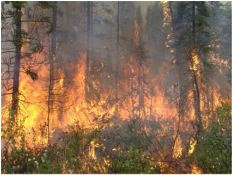 As trees die they become fuel for forest fires. To make the situation worse, the combination of a warmer climate and increased drought dries the forest out and the whole area becomes more susceptible to huge destructive fires. 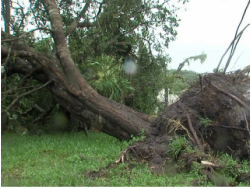 A less known problem comes from the density of air in a warmer climate. For every 1C increase in temperature the atmosphere holds 8% more moisture and water is 800 times denser than air. The result is that a warm moist wind has a lot more destructive power than a drier wind of the same speed. The problem here is that trees are adapted to their region and have leaf canopies and root structures suitable for the original climatic conditions. If they have to deal with a storm more suited to a region thousands of miles away their root system will not hold and they will be blown over. All round the world countries are reporting that species of trees are already suffering and dying in huge numbers and the situation can only get worse as the temperature increases in the future.
|
Bob BinghamOccasional blog posts on topical news items concerning the climate. Please click the RSS feed to receive updates. Categories
All
|
